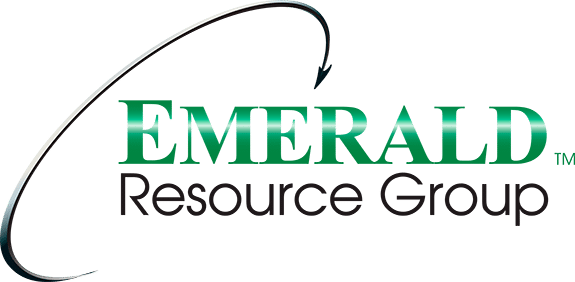In the dynamic landscape of modern business, efficient management of IT budgets is essential for maintaining competitiveness and fostering growth. As technology becomes increasingly integral to operations, organizations must find ways to optimize their IT spending while ensuring robust and scalable infrastructure. This article explores key strategies for optimizing IT budgets, emphasizing cost-effective investments and strategic planning.
Assessing Current IT Spending:
Audit and Analyze Existing Expenses
The foundation of IT budget optimization lies in a thorough audit of current expenditures. Organizations should scrutinize all costs, from hardware and software to services and support, identifying waste such as redundant applications and underutilized resources. This detailed analysis helps pinpoint areas for cost reduction and efficiency improvements.
Cost-Benefit Analysis
Conducting a cost-benefit analysis of existing technology investments is crucial. Evaluating the return on investment (ROI) for each asset allows organizations to prioritize high-value investments and eliminate those that do not contribute significantly to business goals. This ensures that resources are allocated effectively, maximizing financial returns.
Strategic Planning and Budgeting:
Align IT Budget with Business Goals
For optimal IT budget management, spending must align with the broader business strategy. Involving stakeholders from various departments in the budgeting process ensures that IT investments support key objectives and address critical needs. This collaborative approach enhances the overall effectiveness of technology spending.
Long-Term vs. Short-Term Investments
Balancing long-term strategic investments with short-term operational needs is essential. Immediate technological requirements must be met, but investing in scalable solutions that can accommodate future growth is equally important. This balance ensures the IT infrastructure remains flexible and capable of evolving with the business.
Cost-Effective Strategies:
Cloud Computing
Cloud services are a cornerstone of cost-effective IT management. Migrating to the cloud reduces the need for on-premises infrastructure, cutting costs associated with hardware maintenance and upgrades. Hybrid and multi-cloud strategies offer additional flexibility and cost savings, allowing organizations to leverage the most economical resources.
Open Source Software
Utilizing open source software can significantly reduce licensing costs. Open source solutions often provide robust functionality and are supported by active communities, ensuring continuous innovation and support. Organizations can achieve substantial savings while maintaining high-quality software capabilities.
Virtualization and Consolidation
Server and storage virtualization maximizes resource utilization, reducing the need for physical hardware. Data center consolidation further cuts operational costs by streamlining infrastructure and improving efficiency. These strategies save money and enhance the agility and responsiveness of IT operations.
Automation
Automation of routine tasks is crucial for improving efficiency and reducing labor costs. Robotic Process Automation (RPA) can handle repetitive processes, freeing IT staff to focus on more strategic activities. Automation tools ensure consistency and accuracy, minimizing human error and enhancing overall productivity.
Outsourcing and Managed Services
Outsourcing non-core IT functions to specialized providers can result in significant cost savings. Managed services offer a cost-effective way to handle maintenance, monitoring, and support, allowing internal teams to concentrate on core business functions. This approach ensures efficient delivery of IT services at a lower cost.
Effective Procurement Practices:
Vendor Management
Effective vendor management involves negotiating favorable contract terms and seeking volume discounts. Building strong relationships with key vendors can lead to better deals and superior support services. Regular reviews and renegotiations of contracts ensure that organizations get the best value for their money.
Competitive Bidding
Using Request for Proposals (RFPs) for major projects encourages competitive bidding, ensuring the best possible pricing. Benchmarking costs against industry standards helps validate that expenses are in line with market rates, promoting fiscal responsibility.
Monitoring and Optimization:
Regular Performance Reviews
Continuous monitoring of IT performance and costs is vital for ongoing optimization. Regular performance reviews help identify areas where adjustments are needed, ensuring that the IT budget remains aligned with business objectives and responsive to changing needs.
Cost Management Tools
Implementing IT cost management tools enables real-time tracking and control of expenses. These tools provide valuable insights, allowing for data-driven decisions that enhance financial management. By leveraging technology to monitor spending, organizations can proactively address budgetary issues.
Training and Skill Development:
Employee Training
Investing in employee training maximizes the effectiveness of technology investments. Well-trained staff can fully utilize new technologies, driving productivity and innovation. Cross-training employees reduces dependency on specific individuals, ensuring that critical skills are widely distributed within the organization.
Fostering Innovation
Encouraging innovation within the IT department can lead to creative cost-saving solutions. Internal hackathons and innovation challenges stimulate fresh ideas, fostering a culture of continuous improvement. Organizations that embrace innovation can find new ways to optimize their IT budgets.
Risk Management:
Assessing Risks
Identifying and assessing risks associated with IT investments is a crucial aspect of budget optimization. Organizations must develop strategies to mitigate potential risks, ensuring that investments are secure and sustainable.
Business Continuity Planning
Investing in robust disaster recovery solutions minimizes downtime and associated costs. Ensuring that critical systems have redundancy and backup solutions in place protects the organization from significant financial losses due to disruptions.
Conclusion
Optimizing IT budgets requires a strategic and analytical approach, balancing immediate needs with long-term goals. By conducting thorough audits, leveraging cost-effective strategies, and continuously monitoring performance, organizations can ensure that their technology investments deliver maximum value. As the technological landscape continues to evolve, staying agile and responsive to new opportunities and challenges is essential for maintaining a cost-effective IT infrastructure.
In conclusion, effective IT budget management is not a one-time effort but an ongoing process of evaluation and adjustment. Organizations that embrace a disciplined approach to budgeting and leverage the strategies outlined above will be well-positioned to achieve their technology goals while maintaining fiscal responsibility.
Looking for your next IT career move? Check out our website.



